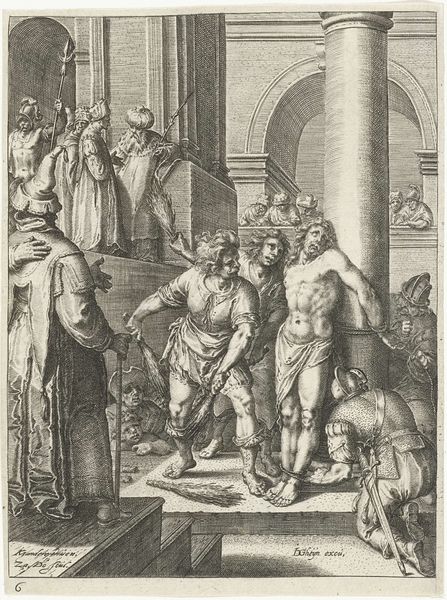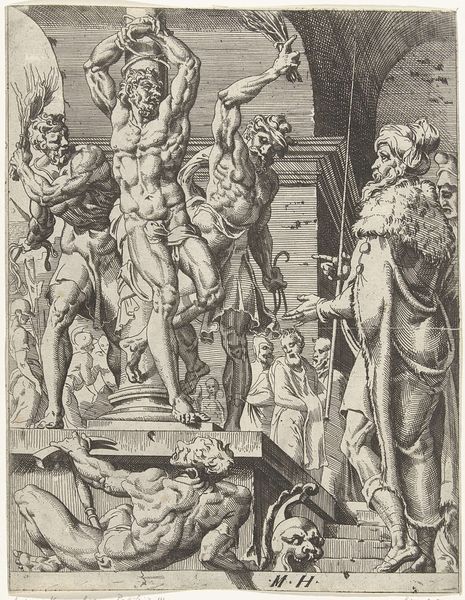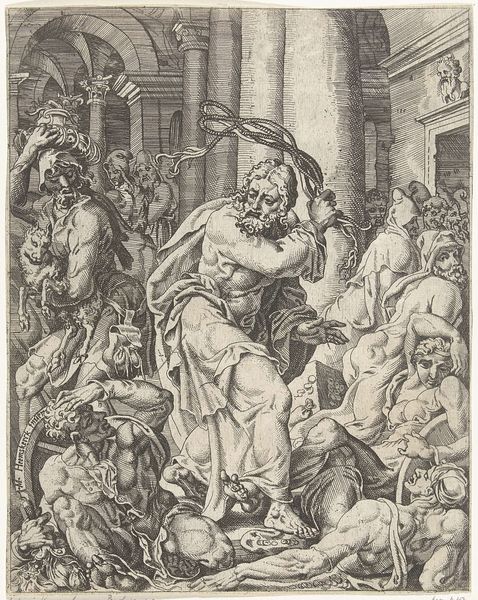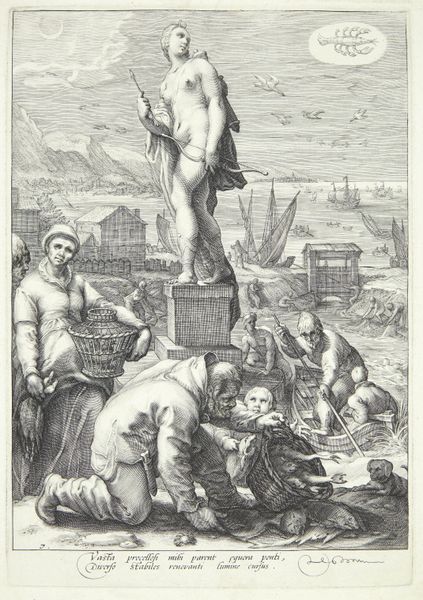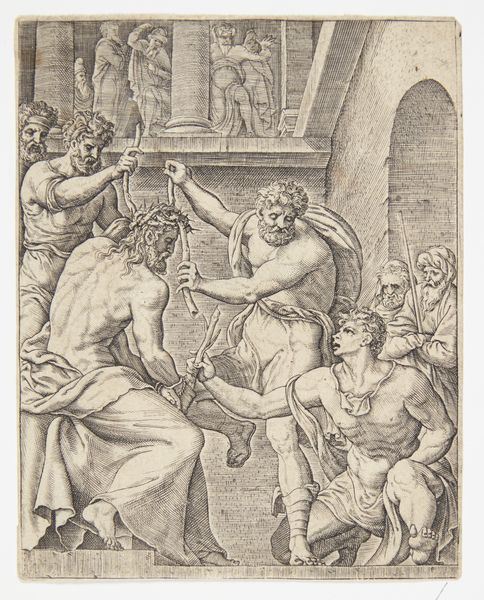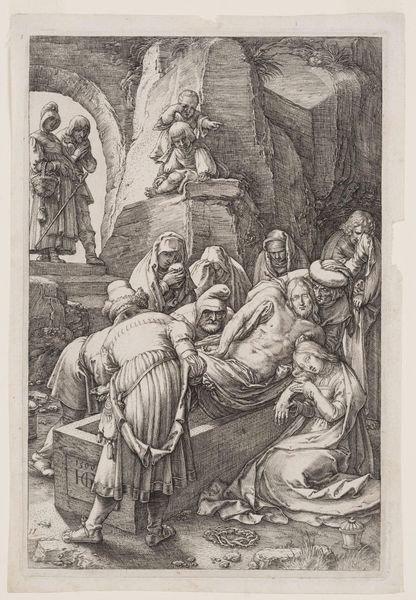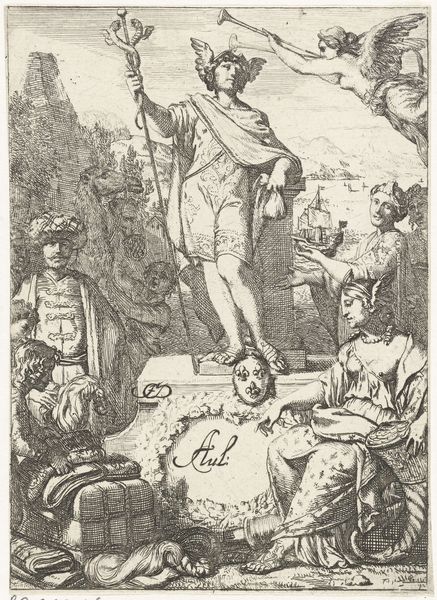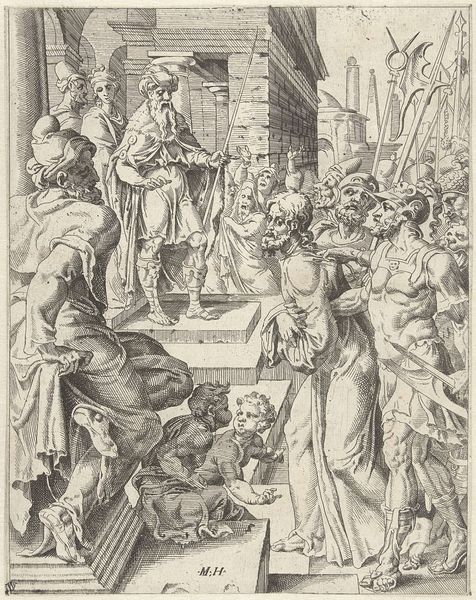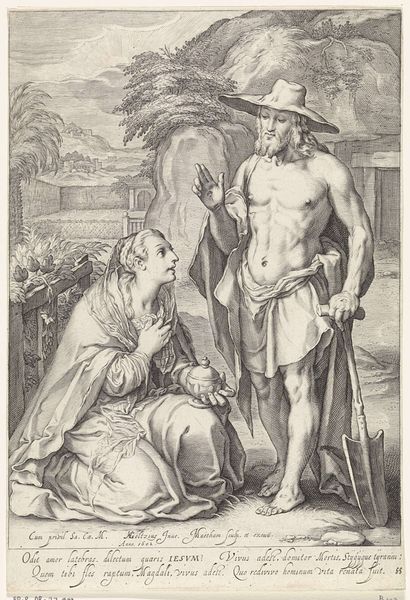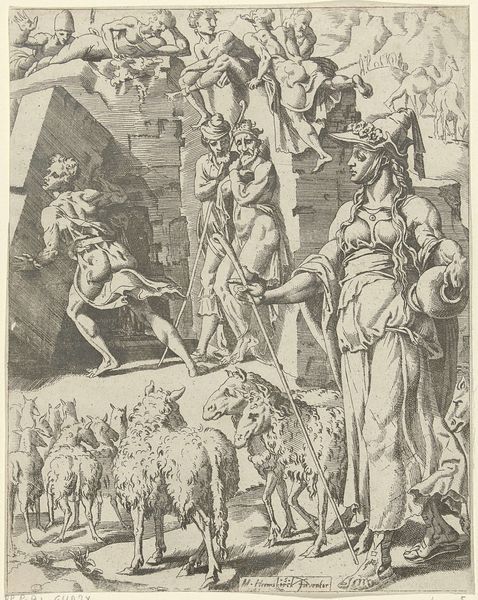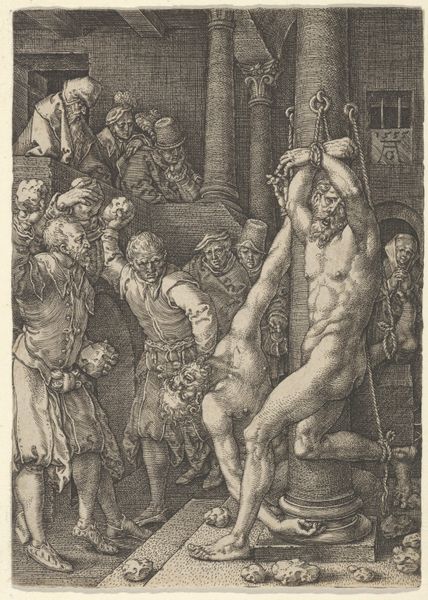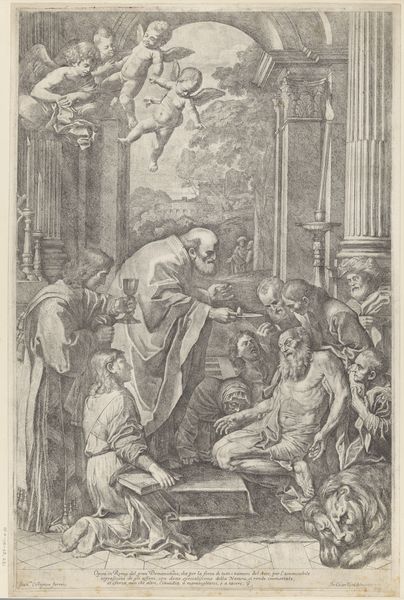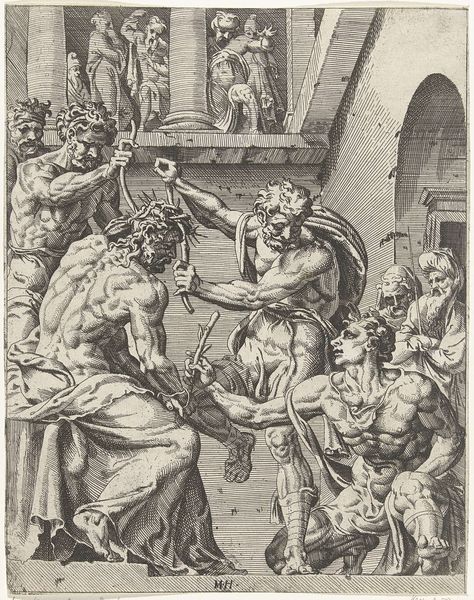
print, engraving
# print
#
mannerism
#
figuration
#
mythology
#
history-painting
#
engraving
Dimensions: 255 mm (height) x 178 mm (width) (plademaal)
Jan Saenredam created this engraving, called Jupiter, in the late 16th or early 17th century. During this time, the Dutch Republic was experiencing a golden age of trade, science, and the arts. Saenredam’s print depicts the Roman god Jupiter amidst a flurry of scholarly activity. We see figures measuring a globe, consulting texts, and gazing reverently towards the statue. The scene reflects the humanist values of the Renaissance, which sought to reconcile classical wisdom with Christian thought. Jupiter, as king of the gods, becomes an allegory for earthly rulers and the ideal of virtuous leadership. However, we might also consider how the image reinforces existing social hierarchies. The male intellectual labor contrasts sharply with the absence of women and the poor. The nude male body of Jupiter is celebrated, while other bodies are excluded from the pursuit of knowledge. What does it mean to ground knowledge and power in a figure that is so gendered and classed? Saenredam’s Jupiter invites us to reflect on the complex relationship between knowledge, power, and representation in the early modern world.
Comments
No comments
Be the first to comment and join the conversation on the ultimate creative platform.
